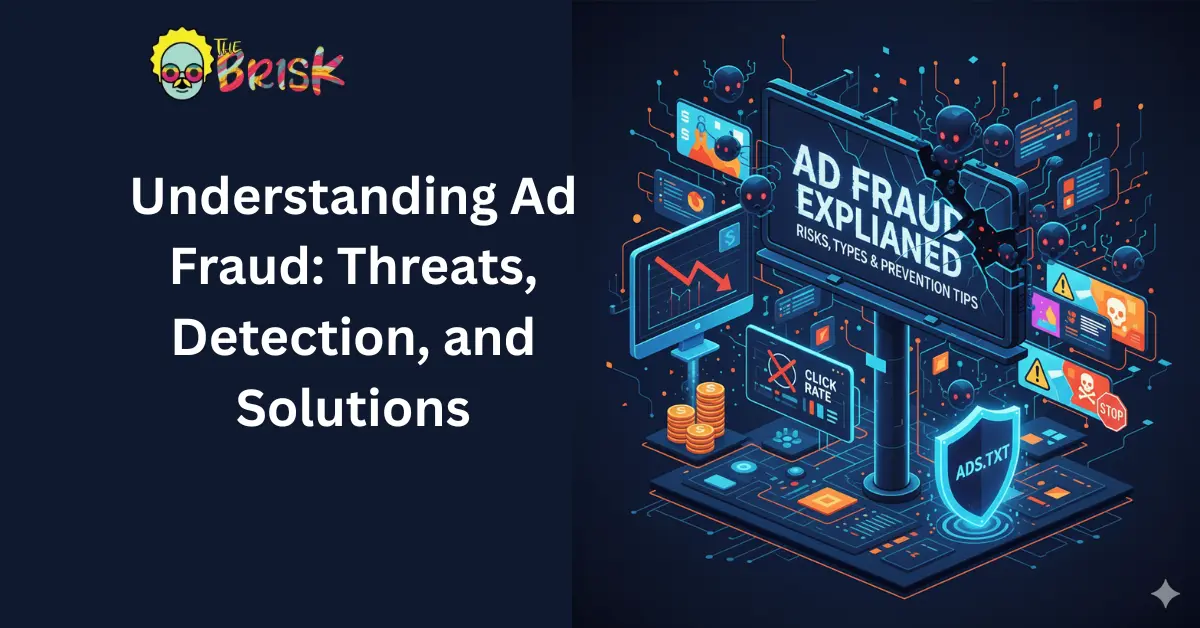Table of Contents
Overview
Ad fraud has been a persistent topic in internet advertising, showing no signs of abating. According to industry data, it costs the digital ecosystem over $6 billion yearly, with many online advertising organizations entirely ignorant of it.
What is Ad Fraud?
Ad fraud is defined as any attempt to deceive digital advertising networks for monetary gain. Scammers frequently utilize bots to commit ad fraud, but this is not always the case. Scammers can use a variety of strategies to mislead advertisers and ad networks into paying them. Bot-based ad fraud is typically called click fraud.
Companies have been exploring various potential solutions to this billion-dollar problem for years, even looking to blockchain for inspiration. However, as the saying goes, sometimes the simplest ideas are the best, and a new IAB project called ads.txt is a prime example.

What is Ads.Txt?
Ads.txt is an IAB Tech Lab initiative aimed at preventing specific types of ad fraud, primarily domain spoofing and illicit inventory arbitrage, and giving transparency in an otherwise opaque sector.
The ads.txt initiative, which was launched in May 2017, aims to clean up the online advertising supply chain, assist companies and advertisers in purchasing authentic digital media with trust, and make it more difficult for fraudsters to profit from selling inventory that does not belong to them.
While ads.txt is about advertising, the portion of the ad is an acronym for Authorized Digital Sellers.

What Problems Does Ads.txt Solve?
Ads.txt, in particular, tries to combat domain spoofing (a sort of ad fraud) and arbitrage, which isn’t technically ad fraud but is nonetheless a shady business.
Arbitrage is the practice of purchasing impressions and then repackaging and reselling them at a greater price by a third party. Ads.txt assists in resolving this issue by identifying the authorized resellers of a publisher’s inventory.
Domain spoofing, also known as domain hijacking, operates in two ways: utilizing malware installed on a user’s computer or changing the URL in an ad tag.
Both methods achieve the same goal in that they deceive ad exchanges and other programmatic platforms into believing that the user is visiting a genuine site when, in fact, the ad will appear on a different, illegal site or a page on a disguised web browser.
Piracy sites, bot-infested websites, and other nefarious websites sometimes employ domain spoofing to monetize sites that would otherwise be blacklisted or ignored by advertising and companies.
This fraudulent technique has persisted for so long because it is difficult for advertisers to ensure that the information given in bids is correct, which means they cannot verify if their ads are shown on the sites they claim they are.
Ads.txt has made domain spoofing and selling illicit inventory much more difficult.
What Are The Types Of Ad Fraud?
- Click Fraud: It is one of the oldest and most widespread types of ad fraud. It is the manufacture of phony traffic using automated clicking programs known as chatbots or the efforts of a large number of low-wage laborers employed by a click farm. Despite the high click rates, no phony traffic will result in a sale, so the advertiser is paying for nothing.
- Search Ad Fraud: To artificially increase their rank on a search engine results page, the criminals construct web pages and use keyword stuffing (SERP). The fraudsters concentrate on prominent terms with the highest cost per click. Advertisers who are interested in particular keywords buy ads on bogus websites, where they have little chance of being seen.
- Ad Stacking: It occurs when a publisher sells many adverts on a website for a single slot. When people view the page, all of the adverts generate impressions, but only the top one is visible.
- Domain Spoofing: It occurs when a fraudster misrepresents the domain where an advertisement is to be placed as that of a good and well-known website. Publishers can occasionally identify their domain in real-time bidding (RTB) advertising. For example, the publisher of a website selling pirated DVDs may appear to be affiliated with a legitimate movie studio’s website.
- Pixel Stuffing: It occurs when advertisements are put within pixels on a page. Because they appear on the page, anybody who views it receives an impression, but because they are invisible, no potential customer sees them.
Best Practices To Avoid Ad Fraud
Awareness of potential fraud and active participation in addressing it are the most significant factors in preventing ad fraud. A multi-layered detection strategy is essential.
The most effective anti-ad fraud solutions integrate highly sophisticated strategies. In any situation, it is critical to take preventive precautions. After all, depending entirely on exclusion lists can have a substantial influence on reach.
Compact and useful tips to protect against Ad fraud are mentioned below:
- Use verification and ad fraud solutions to ensure that booked advertising is shown in the desired area and context, as well as on the desired device.
- Ad fraud solutions for General Invalid Traffic (GIVT) and Sophisticated Invalid Traffic (SIT) should be used for SIVT.
- Ad fraud should be measured across all campaigns to gain a better understanding of online fraud performance.
- Examine your suppliers and partners and find out how they protect themselves against harmful bots and other forms of IVT.
- More insight into inventory and traffic, including purchased traffic and any reach expansions, should be provided and demanded.
- To avoid hacked workstations or high fraud sites, use blocking technologies or anti-targeting technologies.
- Pre-bid filters can be used to avoid fraud on programmatic purchases.
- Use exclusion and/or inclusion lists as needed.
- Concentrate less on low CPMs and more on reaching genuine KPIs that are specific to your campaign.
- When using programmatic advertising, provide and demand more visibility and transparency.
Takeaway
Many people are under the false impression that ad fraud solely affects advertisers.
While it is true that advertisers are more immediately affected by ad fraud in many cases, ad fraud has major consequences for publishers as well.
The Brisk helps you to understand this topic in detail. So, be aware and protect yourself from Ad fraud.




No Comments